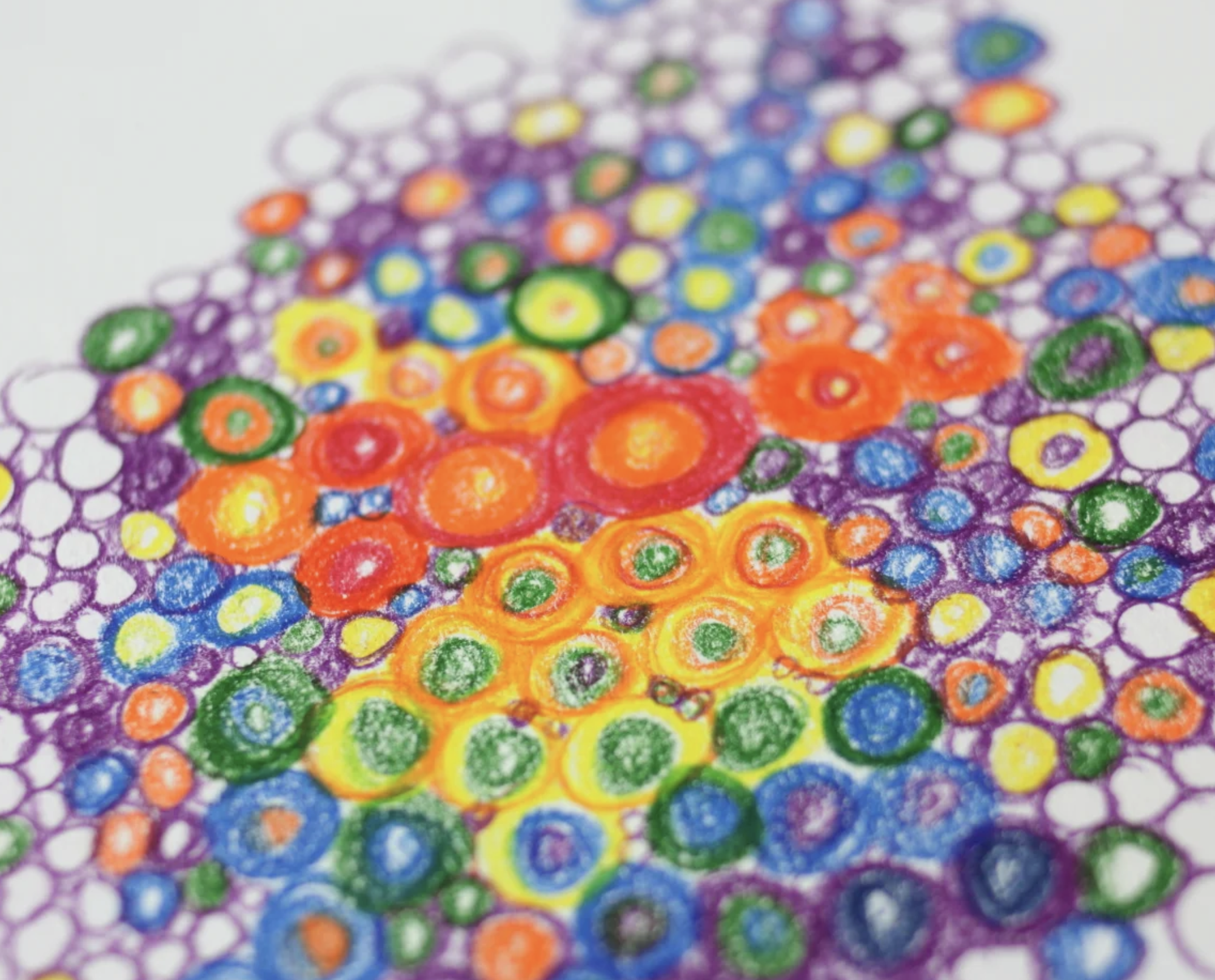How to start a mindful drawing practice
What is mindfulness?
Jon Kabat-Zinn, one of the leading voices on mindfulness, defines it as:
“Awareness that arises through paying attention, on purpose, in the present moment, non-judgmentally.”
Another psychologist, Ellen Langer, puts it even more simply:
“The simple act of actively noticing things.”
To me, mindfulness means becoming aware of my thoughts and bodily sensations so that I’m not controlled by them. Instead of being swept away by automatic reactions, I get to choose how I respond — which story I want to tell.
But what does this have to do with drawing?
Mindfulness is all about observation, and so is drawing. Both invite you to slow down and really notice what’s in front of you. When you draw, you’re practicing presence. And when you bring mindfulness to drawing, you loosen the grip of judgment and criticism that so often stops people from even starting.
So how can you use mindfulness to either begin drawing or enjoy it more deeply? Here are seven steps to get you started:
1. Set an intention
Before you begin, decide what you want from your drawing practice. Do you want to improve your ability to see and render details realistically? Or do you simply want to relax and unwind? Maybe you want to practice quieting your inner critic.
Your goal will shape your approach. For example, I keep separate sketchbooks for different purposes: one for detailed drawings from photos, one for playful doodles (usually in front of the TV), and one for quick sketches on the go. Each time I open a sketchbook, I remind myself why I’m drawing. Having a clear purpose helps me push through obstacles.
2. Pay attention
Drawing, like mindfulness, begins with noticing. Before you start, take a moment to observe with all your senses: what do you see, hear, smell, or feel in the space around you?
Then turn your attention inward. How does your body feel today — tense, relaxed, tired, buzzing with energy? Finally, notice your thoughts. Are they supportive, critical, impatient? If it helps, jot them down. Also notice what sensations those thoughts create in your body.
3. Get curious
As you practice observation, curiosity naturally grows. Treat your experience like an experiment or an investigation. Curiosity keeps you engaged and transforms even a “boring” subject into a discovery.
If you feel stuck, ask yourself: What’s interesting here? That simple question can reawaken your sense of wonder and keep you moving.
4. Find softness
You’ll probably notice critical thoughts as you draw. Rather than fighting them or scolding yourself for having them, try bringing softness and kindness to the moment.
Treat yourself as you would a close friend or a child who’s learning something new. A little gentleness can transform how you experience the act of drawing.
5. Let go of judgment
We all have judgmental thoughts — especially about our own abilities. Mindfulness reminds us that thoughts aren’t facts. You don’t have to believe the voice that says, This looks terrible.
Instead, try observing judgmental thoughts as they arise, then letting them go. You might even thank them for showing up — and then release them. Drawing becomes far more enjoyable when it isn’t clouded by constant self-criticism.
6. Move through resistance
Resistance is part of any practice. Sometimes you won’t feel like drawing, or you’ll doubt whether it’s worth it. That doesn’t mean you should stop.
Instead, meet resistance with curiosity and softness. I often feel it when I return to my studio after a long day of work. At first, it feels pointless. But if I stay with it — even gently — I eventually find my flow. If resistance persists, take a break, reflect on what’s blocking you, but don’t give up entirely.
7. Follow your intuition
One of the most rewarding parts of mindful drawing is reaching a state of flow, where your hand moves almost on its own. Sometimes that happens, sometimes it doesn’t. Either way, it’s part of the process. Trust your intuition, let it guide you, and allow yourself to practice without needing control over the outcome.
Final Thoughts
Mindfulness and drawing share the same foundation: observation. Both invite you to be present, curious, and compassionate with yourself. When you combine them, drawing becomes less about producing a perfect picture and more about connecting with the moment.
Each line you put on paper becomes a practice in awareness, acceptance, and freedom.
Disclaimer: The information in this article is not intended to be a substitute for professional medical advice, diagnosis, or treatment. Always seek the advice of your physician or other qualified healthcare provider with any questions you may have regarding a medical condition. The author and publisher make no guarantees or warranties regarding the accuracy or completeness of the information provided in this article, and any reliance on the information is strictly at your own risk. You can find our full Disclaimer here.

